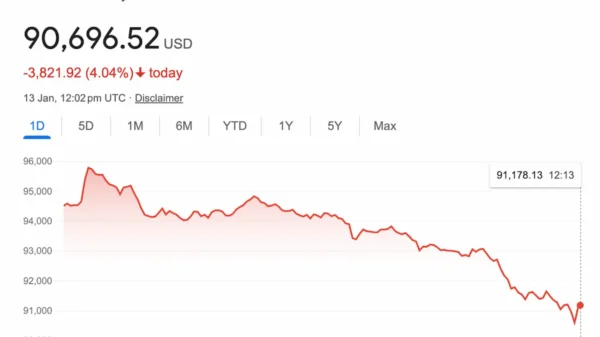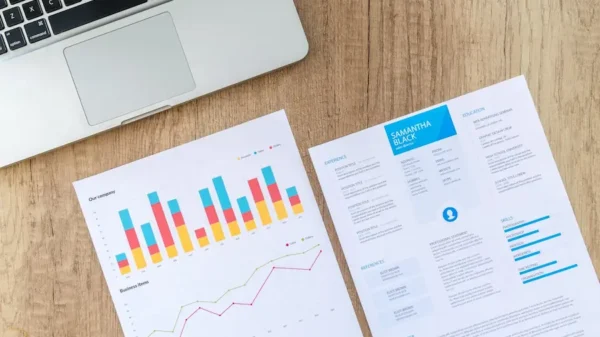If you’re preparing for a job interview, you know the importance of a strong start. Your self-introduction is not just a formality; it’s your first opportunity to make a lasting impression.
From understanding the nuances of different interview settings, whether it be a formal corporate environment or a casual startup, to offering example templates for various career levels, this guide is designed to boost your confidence and ensure you make a lasting first impression. Perfect for fresh graduates, mid-level professionals, and seasoned executives alike, our insights into effective communication, cultural awareness, and post-introduction strategies will equip you with the tools needed to succeed in any job interview scenario.
Understanding the Interview Context
Understanding the interview context is pivotal for crafting an introduction that resonates with your interviewers and aligns with the company’s culture and the specific dynamics of the interview. Recognize the different interview settings and adapt accordingly:
- Formal Corporate Interviews: Expect a structured format, high expectations for professionalism, and a focus on qualifications and experiences relevant to the role. Your introduction should be concise and professional.
- Casual Startup Interviews: These may have a relaxed atmosphere, possibly in informal settings. Emphasize adaptability, innovation, and entrepreneurial experience.
- Remote Video Call Interviews: Manage technical aspects and convey enthusiasm and professionalism through the screen. Ensure a professional background and familiarity with the technology.
Adapting to the Company Culture
Research the company’s culture in advance. Tailor your introduction to mirror the formality or informality of the company. Use the company’s website, social media channels, and any news articles to gauge its values, mission, and work environment. Align your introduction with what the company values.
Aligning with the Job Role
Tailor your introduction based on the role you are interviewing for. Highlight specific skills and experiences relevant to the job description. For instance, emphasize creativity for creative positions and leadership experiences for managerial roles.
Understanding the Interviewer’s Expectations
Pay attention to the interviewer’s demeanor and adjust accordingly. Match their tone and be prepared to adjust your introduction based on their cues. Authenticity is key; ensure that your introduction reflects your true professional self.
Preparation Before the Interview
Preparing for a job interview involves several key components:
- Researching the Company and Role: Understand the company’s history, mission, and the specifics of the job role.
- Reflecting on Your Experiences: Connect your past experiences with the job requirements.
- Crafting a Personal Pitch: Define your unique value proposition and keep your pitch succinct and relevant.
- Anticipating and Preparing for Questions: Be ready for common and behavioral interview questions.
- Practicing Your Introduction: Rehearse and seek feedback to refine your delivery.
- Preparing Mentally and Physically: Ensure you are well-rested and confident.
Creating a Positive First Impression
Your first impression sets the tone for the entire interview:
- Appearance and Dressing Appropriately: Dress according to the company culture and look well-groomed.
- Confident Body Language: Maintain good posture, make eye contact, and use appropriate gestures.
- Initial Interactions: Start with a polite greeting, engage in small talk, and show active listening.
- Voice and Speaking Manner: Speak clearly, use a friendly yet professional tone, and articulate your thoughts concisely.
Structuring Your Self-Introduction
Your self-introduction should have a clear structure:
- The Beginning: Introduce yourself and provide a hook that makes you memorable.
- The Middle: Outline your professional background, highlight relevant skills, and mention your educational background if relevant.
- The End: Explain your interest in the role and how your career aspirations align with the opportunity.
Example Templates
Templates for various career levels:
Fresh Graduates
Introduction: Start by establishing your new professional identity, mentioning your degree and the university you graduated from.
Skills and Academic Achievements: Highlight the key skills or significant projects you undertook during your studies. These should be relevant to the job you’re applying for. For instance, if you’re applying for a marketing role, mention relevant courses, internships, or projects that demonstrate your marketing abilities or creativity.
Alignment with Company Goals: Show that you’ve researched the company and understand how your skills and academic experience align with their goals or the specific requirements of the job role.
Enthusiasm for the Role: Convey your eagerness to transition from academic to professional life, emphasizing your readiness to apply your knowledge and passion in a real-world setting.
Examples for Fresh Graduates:
Technology Industry: “Hello, I’m [Name], a recent Computer Science graduate from [University]. My academic journey included projects in machine learning and software development, equipping me with skills in Python and Java, aligning with [Company’s goals in tech innovation]. I’m excited to apply my coding skills and collaborative experience at [Company Name].”
Healthcare Industry: “Hi, I’m [Name], a recent Nursing graduate from [University]. My clinical rotations in pediatrics and emergency care have honed my patient care and critical thinking skills, directly relevant to [Hospital’s patient-first approach]. I am eager to start my nursing career and contribute to patient care excellence at [Hospital Name].”
Marketing Industry: “Hello, I’m [Name], a fresh graduate with a degree in Marketing from [University]. I’ve led successful digital marketing campaigns in my internships, focusing on social media strategies and content creation. This experience aligns well with [Company’s focus on digital presence]. I’m thrilled at the prospect of bringing my creativity and digital savvy to [Company Name].”
Mid-Level Professionals
Professional Experience: Begin with a brief mention of your total years of experience in your field, which establishes your expertise.
Significant Achievements: Focus on a key project or achievement from your previous role, especially one that had a measurable impact, like increasing sales, improving efficiency, or leading a successful team.
Expertise and Skills: Highlight the skills or areas of expertise you’ve developed that are most relevant to the new role. This could include technical skills, leadership experience, or specific industry knowledge.
Contribution to the New Role: Show your eagerness to contribute to the new company. This implies that you’re not just looking for any job, but are specifically interested in what this company and role have to offer.
Examples for Mid-Level Professionals:
Finance Industry: “Good morning, I’m [Name], bringing 5 years of experience in financial analysis and portfolio management. At [Previous Company], I managed a diverse investment portfolio, achieving a 20% return on investment annually. I’m eager to bring my expertise in strategic investment and market analysis to [Company Name].”
Engineering Industry: “Good afternoon, I’m [Name], with 7 years of experience in civil engineering. At [Previous Company], I led the design and execution of a major urban infrastructure project, enhancing the city’s transport efficiency. I am excited to bring my project management and technical skills to [Company Name], contributing to innovative engineering solutions.”
Education Industry: “Hello, I’m [Name], an educator with over 6 years of experience in secondary education. At [Previous School], I developed an interactive curriculum in Science that improved student engagement by 30%. I’m enthusiastic about bringing my experience in curriculum development and classroom innovation to [School Name].”
Senior Professionals
Extensive Experience: As a senior professional, emphasize your extensive experience in the field. This sets the stage for presenting yourself as someone with a deep understanding of the industry.
Career Focus: Discuss key skills and major achievements. Here, the focus should be on strategic contributions or leadership roles that have significantly impacted past organizations.
Future Contributions: Articulate how you envision using your experience to benefit the new company. This could involve addressing specific challenges the company is facing or opportunities in the industry that you are uniquely equipped to tackle.
Strategic Fit: Show that you see a strategic fit between your long-term career goals and the direction of the company, signaling that your joining would be mutually beneficial.
Examples for Senior Professionals:
Manufacturing Industry: “Hello, I’m [Name], with over 15 years of experience in manufacturing management. My career has focused on streamlining production processes and implementing lean manufacturing techniques, contributing to a 25% increase in operational efficiency. I’m looking forward to leveraging my experience for [Company Name], particularly in optimizing production lines and enhancing quality control.”
Information Technology Industry: “Hi, I’m [Name], with 20 years of experience in IT project management and systems integration. My career has been dedicated to leading complex digital transformation projects, resulting in enhanced efficiency and scalability. I’m excited to potentially bring my strategic planning and technological expertise to [Company Name], aligning IT initiatives with business objectives.”
Retail Industry: “Hello, I’m [Name], with over 18 years in retail management. My experience includes scaling retail operations and developing omnichannel strategies, driving a 40% increase in sales revenue. I look forward to potentially utilizing my expertise in retail expansion and digital integration for [Company Name], especially as it explores new market opportunities.”
Effective Communication Skills
Effective communication goes beyond words:
- Clarity in Verbal Communication: Be concise, articulate, and use professional language.
- Confidence in Delivery: Use voice modulation, pauses, and rehearse to build confidence.
- Engagement with the Audience: Maintain eye contact, show active listening, and respond appropriately.
- Nonverbal Communication: Use positive body language and facial expressions.
- Empathy and Understanding: Tailor your message to reflect the company’s needs and cultural context.
Handling Nervousness and Building Confidence
- Practice and Rehearsal: Familiarize yourself with your content.
- Seeking Feedback: Get insights from trusted individuals.
- Mindfulness and Relaxation Techniques: Use breathing exercises and mindfulness meditation.
- Positive Visualization: Visualize a successful interview and use affirmations.
- Arrive Prepared and Early: Know the logistics and familiarize yourself with the interview format.
The Role of Cultural Awareness
Understanding cultural differences is crucial:
- Researching Cultural Expectations: Be aware of cultural norms and expectations.
- Adapting Communication Styles: Adjust your communication based on cultural sensitivities.
- Showing Respect and Openness: Use inclusive language and demonstrate cultural sensitivity.
- Feedback and Adaptation: Be ready to adjust your approach based on interviewer cues.
Post-Introduction Strategies
- Anticipating Follow-Up Questions: Be prepared for questions related to your introduction.
- Elaborating on Key Points: Provide more details and quantify achievements.
- Transitioning Techniques: Use segue statements and ask questions to transition smoothly.
- Active Listening and Engagement: Show attentiveness and adaptability.
- Maintaining Professionalism and Positivity: Frame experiences positively and maintain a professional demeanor.
Mistakes to Avoid in Your Self-Introduction
- Being Too Verbose: Stay concise and relevant.
- Getting Too Personal: Keep the focus on professional qualifications.
- Straying Off-Topic: Highlight experiences relevant to the job.
- Failing to Prepare: Practice and prepare thoroughly.
- Not Showing Enthusiasm: Convey passion and interest in the role.
- Neglecting Nonverbal Cues: Use positive body language and facial expressions.
- Using Fillers and Jargon: Speak clearly and avoid excessive jargon.
- Lack of Cultural Sensitivity: Be aware of cultural differences and show respect.
Conclusion
A strong self-introduction in a job interview is essential for making a lasting first impression. By understanding the interview context, preparing thoroughly, and avoiding common mistakes, you can present yourself as a compelling and suitable candidate. This guide provides the tools and strategies needed to succeed in any job interview scenario.
FAQs
What should be the ideal length of a self-introduction?
Aim for 30 seconds to 1 minute. It should be long enough to cover key points but short enough to maintain interest.
How can I personalize my introduction?
Include a unique aspect of your background or a personal anecdote that relates to the role or company.
How do I avoid sounding rehearsed?
Practice your introduction until it feels natural. Focus on the key points rather than memorizing it word for word.
Can I use humor in my introduction?
Use humor cautiously and only if it feels appropriate for the company culture and interview setting.
How do I handle a lapse or mistake during my introduction?
Stay calm, pause briefly, and then continue. A small mistake is often less noticeable than your reaction to it.















































